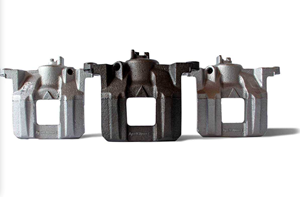Understanding the Hidden Costs and Benefits of Anodizing
Anodizing has capital costs and benefits beyond the machines — companies evaluating in-house systems should examine them carefully before committing.

Q: What should companies consider when evaluating whether they should implement in-house anodizing operations?
Anodizing refers to a broad range of surface treatments commonly applied to various grades of aluminum and titanium to provide cosmetic and functional benefits. The demand for anodizing continues to increase as the number of applications for highly functional components grows across a wide range of industrial and consumer markets.
Many new and existing companies — from machine shops to end users to general finishing providers — are evaluating the implementation costs to try to meet this demand in-house. While many of the cost factors are obvious, several require some deeper knowledge of the field. Likewise, there are a number of unexpected, value-added benefits associated with a properly implemented operation. Outlining these factors should simplify the evaluation process.
Capital costs
The capital costs associated with an anodizing tank line are typically the initial focus when evaluating anodizing systems. Key factors affecting system sizing and cost include the parts’ material type, alloy, size, weight and shape; the type and color of the resulting anodizing finish; the expected performance of the surface finish; load size per batch requirements; and loads per hour requirements.
The type, size and number of hoists a system requires depends on the factors outlined above. Large and heavy loads require the use of a hoist, but users can improve the repeatability and productivity of systems for both large and small parts through automation. Automated systems also allow operators to step away and perform other operations, only requiring their return for loading and unloading.
As a result, process control, data acquisition and automation requirements will also influence system design. While users can equip manual tank lines with control and data acquisition software, automated hoist systems typically include these capabilities as standard.
Beyond these machine-specific costs, users will need to properly equip their facilities to install anodizing systems. Infrastructure considerations like floor space, floor preparation and area access; ventilation and exhaust gas treatment; incoming water quality and wastewater treatment; chemical storage and handling; and material handling through racks and carts can add 25% or more to the capital cost of a system.
Beneficial value
A comprehensive evaluation should also consider the benefits from implementing an in-house anodizing system — namely, a more efficient supply chain and improvements to quality and traceability.
With in-house anodizing cutting out several steps in the supply chain, end-users or component suppliers can improve their ability to react to changes in internal priorities. Elimination of packaging and shipping further reduces turn-around time.
In-house anodizing can also benefit quality control. Third-party anodizers may define quality according to different standards, and the lack of tight controls between them could result in variations in color, thickness and hardness. The ability to internally set and control process conditions improves process controls, leading to higher yields.
Automated hoist systems commonly include software packages that contain process records knows as recipes, which can adjust all settings and cycle times for the line. Automated recipes with repeatable cycle times will optimize productivity, repeatability and yield. Manual systems can also be equipped with process control and data acquisition capabilities in cases where a hoist is not required. These software options create traceable data records, which can allow companies to meet certain certifications critical to many industries. ISO 9001 and Nadcap (National Aerospace and Defense Contractors Accreditation Program) certification are only two among these important certifications, with the automotive and medical industries also chief among those requiring certifications.
Related Content
Deoxidizing Aluminum as a Pretreatment
This important first step can help prepare the metal for subsequent surface finishing.
Read MoreFixing Corrosion Between Anodized Aluminum and Steel
Anne Deacon Juhl, Ph.D., with AluConsult, says Galvanic corrosion is due to an electrical contact with a more noble metal or a nonmetallic conductor in a conductive environment.
Read MoreChoosing and Troubleshooting Copper Electroplating Processes
Learn more on this inexpensive and highly efficient process.
Read MoreRead Next
Preventing Anodizing Cathodes from Turning Red
While the red color may not be desirable, anodizing expert Drew Nosti says it poses no particular problem to a successful anodizing process.
Read MoreTips for Optimizing or Expanding Your Anodizing Line
Jim Acquaviva, director of business development for Technic Equipment, offers advice for assessing areas of process improvement for anodizing operations, outlining helpful steps for an end-user self-assessment.
Read MorePolishing Is Spot-On For Arlington Plating
APC has an extensive polishing and buffing department, one that has been a mainstay of the shop for more than 60 years.
Read More

























